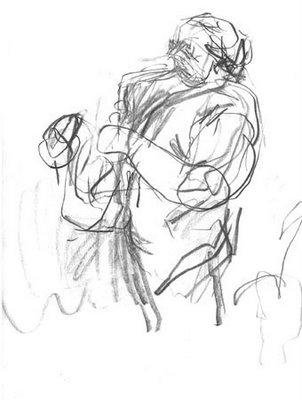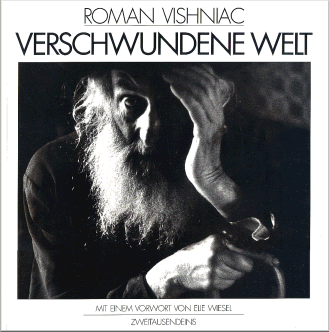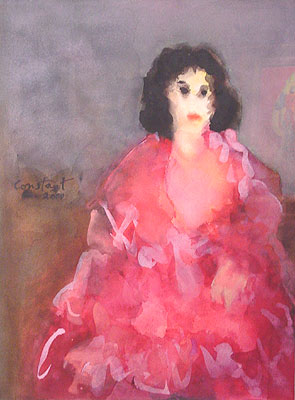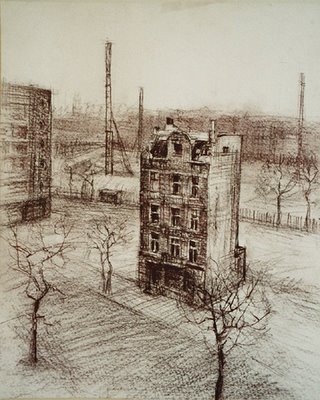 There is an exhibition coming up in an art gallery in London with drawings of Bob Dylan. The singer-songwriter of visual poetry, appears to be a fine artis himself. The singer of When I paint my Masterpiece started exploring fine arts when he was living in Woodstock and invited to the studio of his neighbour. He also followed painting classes by Norman Raeben (the son of Sholom Aleichem. He went to the Metropolitan Museum: 'The first exhibition I saw there was of Gauguin paintings and I found I could stand in front of any one of them for as long as I'd sit at the movies, yet not get tired on my feet. I'd lose all sense of time."
There is an exhibition coming up in an art gallery in London with drawings of Bob Dylan. The singer-songwriter of visual poetry, appears to be a fine artis himself. The singer of When I paint my Masterpiece started exploring fine arts when he was living in Woodstock and invited to the studio of his neighbour. He also followed painting classes by Norman Raeben (the son of Sholom Aleichem. He went to the Metropolitan Museum: 'The first exhibition I saw there was of Gauguin paintings and I found I could stand in front of any one of them for as long as I'd sit at the movies, yet not get tired on my feet. I'd lose all sense of time.""I have done sketching all my life. In notebooks. on napkins, on rough paper, on cardboard plates and coffee pots. basically when there is something to look at. "
"I've
done sketching most of my life. In notebooks, on napkins, on rough
paper or cardboard, plates and coffee pots … basically when there's
something to look at –
Read more at http://www.gigwise.com/news/83374/bob-dylan-artwork-to-go-on-show-at-the-national-portrait-gallery#hjWZKle4Km0IxAi5.99
Read more at http://www.gigwise.com/news/83374/bob-dylan-artwork-to-go-on-show-at-the-national-portrait-gallery#hjWZKle4Km0IxAi5.99
"I've
done sketching most of my life. In notebooks, on napkins, on rough
paper or cardboard, plates and coffee pots … basically when there's
something to look at –
Read more at http://www.gigwise.com/news/83374/bob-dylan-artwork-to-go-on-show-at-the-national-portrait-gallery#hjWZKle4Km0IxAi5.99
Read more at http://www.gigwise.com/news/83374/bob-dylan-artwork-to-go-on-show-at-the-national-portrait-gallery#hjWZKle4Km0IxAi5.99
"I've
done sketching most of my life. In notebooks, on napkins, on rough
paper or cardboard, plates and coffee pots … basically when there's
something to look at –
Read more at http://www.gigwise.com/news/83374/bob-dylan-artwork-to-go-on-show-at-the-national-portrait-gallery#hjWZKle4Km0IxAi5.99
Read more at http://www.gigwise.com/news/83374/bob-dylan-artwork-to-go-on-show-at-the-national-portrait-gallery#hjWZKle4Km0IxAi5.99
"I've
done sketching most of my life. In notebooks, on napkins, on rough
paper or cardboard, plates and coffee pots … basically when there's
something to look at –
Read more at http://www.gigwise.com/news/83374/bob-dylan-artwork-to-go-on-show-at-the-national-portrait-gallery#hjWZKle4Km0IxAi5.99In his autobiography Chronicles, vol 1, Dylan writes: "What would I draw? Well, I guess I would start with whatever was at hand. I sat at the table, took out a pencil and paper and drew the typewriter, a crucifix, a rose, pencils, knives and pins, empty cigarette boxes'd lose track of time completely Not that I thought I was any great drawer, but I did feel like I was putting an orderliness to the chaos around."Rows of houses, orchard acres, lines of tree trunks, could be anything. I can take a bowl of fruit and turn it into a life and death drama.
Read more at http://www.gigwise.com/news/83374/bob-dylan-artwork-to-go-on-show-at-the-national-portrait-gallery#hjWZKle4Km0IxAi5.99In his autobiography Chronicles, vol 1, Dylan writes: "What would I draw? Well, I guess I would start with whatever was at hand. I sat at the table, took out a pencil and paper and drew the typewriter, a crucifix, a rose, pencils, knives and pins, empty cigarette boxes'd lose track of time completely Not that I thought I was any great drawer, but I did feel like I was putting an orderliness to the chaos around."Rows of houses, orchard acres, lines of tree trunks, could be anything. I can take a bowl of fruit and turn it into a life and death drama.
 Dylan has decorated the covers of his albums Self Portrait and Planet Waves and Music of Big Pink by The Band, all in an expressionist style. "I did this portrait for the cover. I mean, there was no title for that
album. I knew somebody who had some paints and a square canvas, and I
did the cover up in about five minutes. And I said, 'Well, I'm gonna
call this album Self Portrait" For the Bootleg series he drew Another Self portrait in pastel . Twelve of his imaginary pastel portraits are currently exhibited in the National Portrait Gallery under the title "FaceValue'
Dylan has decorated the covers of his albums Self Portrait and Planet Waves and Music of Big Pink by The Band, all in an expressionist style. "I did this portrait for the cover. I mean, there was no title for that
album. I knew somebody who had some paints and a square canvas, and I
did the cover up in about five minutes. And I said, 'Well, I'm gonna
call this album Self Portrait" For the Bootleg series he drew Another Self portrait in pastel . Twelve of his imaginary pastel portraits are currently exhibited in the National Portrait Gallery under the title "FaceValue'. A sketchbook of him is published 'Drawn blank' (1994) with pen and charcoal sketches made during three years during his concert tours "mainly to relax and refocus a restless mind. Mostly when I was on a train or in a café, just to make sense of what was in my immediate world. I found it relaxed me." Sometimes he also working with models. In the Biograph booklet one can see photographs of him drawing the view from a hotel window
For the exhibition he reworked these sketches. The drawings were digitally transferred to bigger sheets of paper. and he added bright colours of watercolour or gouache. These fauvist reworkings are not always good, but on the Trains Tracks (image above) it really works. The orange sky it a good addition to the black & white graphics. This drawing is a personal memory of his youth "I’d seen trains from my earliest childhood days. The sound of trains off in the distance more or less made me feel at home".
His portraits show strong shapes and strong contrasts as can be seen on the studio photograph below. During the recording of Oh Mercy he has made a charcoal portrait of his producer Daniel Lanois. He borrowed a sketch pad from a session musician, said: Daniel, do you mind if I sketch your picture? He made a charcoal portrait of him with his bandana and long Indian style hair


During an interview in his touring bus he is sketching the face of the journalist. (see http://www.youtube.com/watch?v=y-iFZbrzYb4 ). In the song Highlands, a 17- minute 'talking blues' song, he is describing a scene in a restaurant where he is making a portrait sketch of the waitress:
I'm in Boston town, in some restaurant. I got no idea what I want. Well, maybe I do but I'm just really not sure. Waitress comes over. Nobody in the place but me and her.
It must be a holiday, there's nobody around. She studies me closely as I sit down. She got a pretty face and long white shiny legs. She says, "What'll it be?"I say, "I don't know, you got any soft boiled eggs?".
She looks at me, Says "I'd bring you somebut we're out of 'm, you picked the wrong time to come "Then she says, "I know you're an artist, draw a picture of me! "I say, "I would if I could, but, I don't do sketches from memory."
"Well", she says, "I'm right here in front of you, or haven't you looked?". I say," all right, I know, but I don't have my drawing book! "She gives me a napkin, she says, "you can do it on that". I say, "yes I could but, I don't know where my pencil is at!
"She pulls one out from behind her ear. She says "all right now, go ahead, draw me, I'm standing right here "I make a few lines, and I show it for her to see. Well she takes a napkin and throws it back. And says "that don't look a thing like me!"I said, "Oh, kind miss, it most certainly does", She says, "you must be jokin.'" I say, "I wish I was!"
www.edgarportraits.com

















